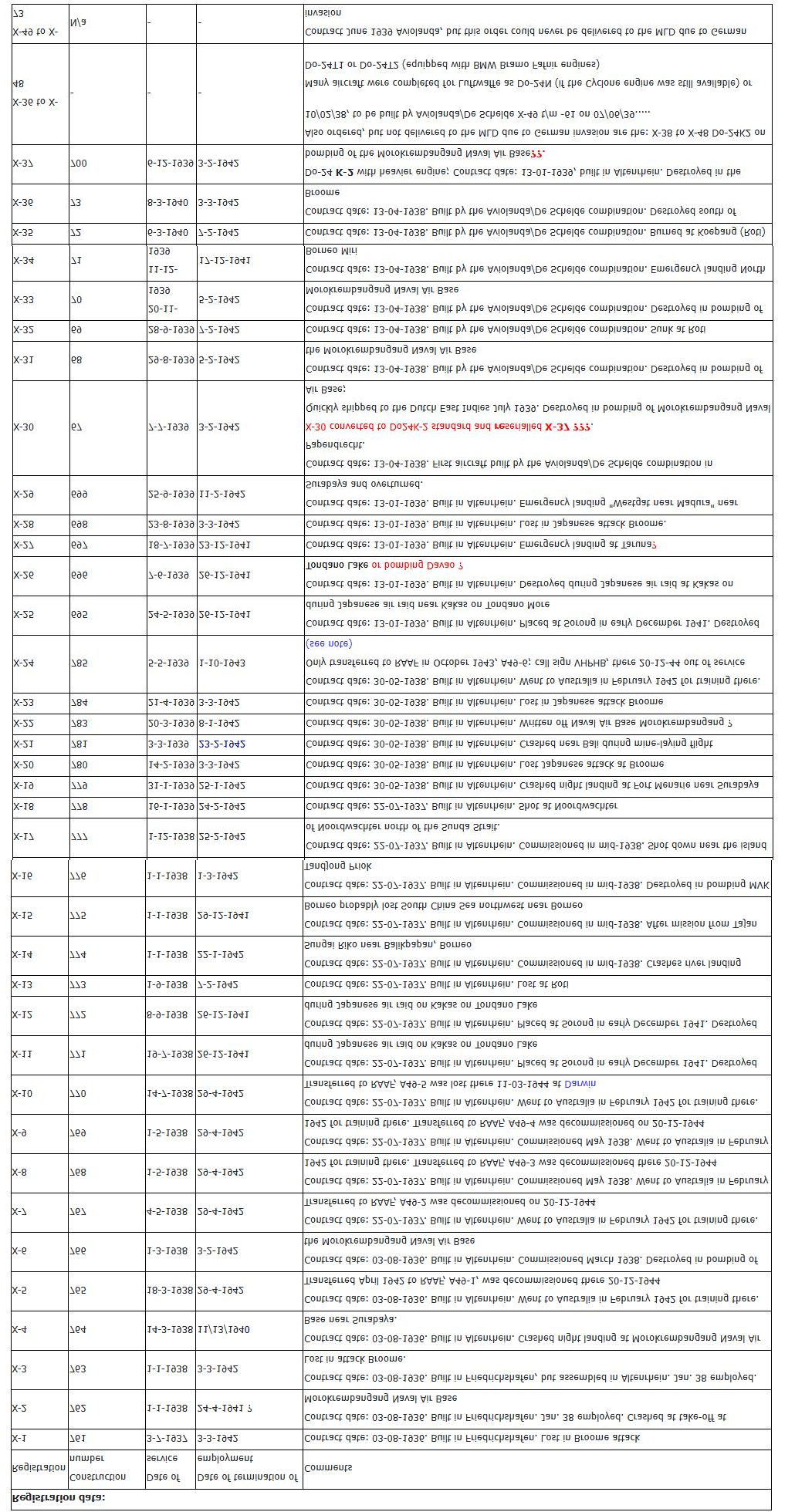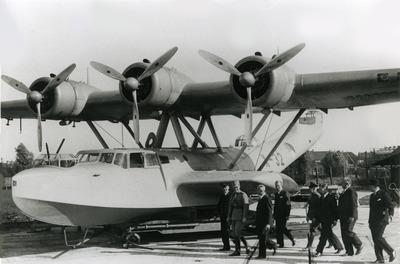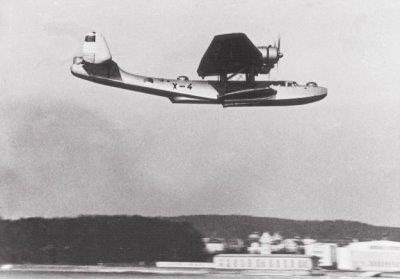Ordered August 1936, delivered 1937-1940. , features X1 to X37 (orders for several)
Dornier supplied the first series but also later orders. The Dutch license construction of the Do-24K meant the participation of De Schelde (wing) and Aviolanda (other parts). Aero Metall (Zurich, Switzerland) supplied the basis of the X-7 to X-18 as Aviolanda had some production problems. Phasing out mostly took place at Aviolanda.
The first 12 Do 24K-1 aircraft were armed with three 7.9 mm Colt-Browning machine guns at 3 fuselage positions. From the X-13 a heavy 20 mm Hispano-Suiza 404 gun was mounted in the rear turret.
There was a need for a more powerful engine, and from the X-37 onwards it would be used, namely a Cyclone Gr-1820-G105A engine with a power of 1100 hp each. This improved version was called the Do 24K-2, but it wasn't really visible from the outside. No less than 25 of these improved aircraft were ordered, but only 1 example (the X-37) was delivered to the MLD. (After the German invasion of the Netherlands, the aircraft for the German Navy were finished with the designation Do-24N and production continued).
Delivered to the MLD for the war are 37 pieces that were shipped to the Dutch East Indies by ship in the period from the end of 1937 until even May 1940. By the end of 1939, some 31 aircraft had already arrived in the Dutch East Indies. The Dorniers were frequently deployed in the Dutch East Indies from various bases, with Morokrembangang near Surabaya as their main base. They did a great job.
World War II in the East had broken out in full force after the Japanese attack on the American Pearl Harbour on 7 December 1941. Scattered over the archipelago were some groups with Do 24 at the beginning of December, such as 3 flying boats at Sorong in the North-West of Dutch Papua New Guinea, and 3 Do 24s in Ternate. Attacks by the Japanese enemy in the area had already begun. The "X-32" managed to sink a Japanese destroyer on December 17, 1941. At the beginning of February 1942, 5 aircraft were sent to quieter Australia for training purposes.
Most Dutch Do 24K aircraft were lost during the Japanese attack on the Dutch East Indies and invasion of Java in 1942. Only six Dornier aircraft managed to escape to Australia, but a Japanese attack followed in Broome where the fleeing aircraft with Catalinas had just arrived. The consequences of this attack were horrible with dozens of deaths.
The five training aircraft present in Australia (and also the "X-24" later) were taken over by the RAAF. They were given a tricolor camouflage pattern and other registrations.









